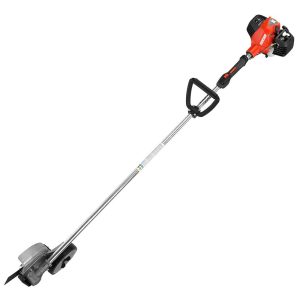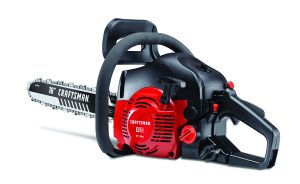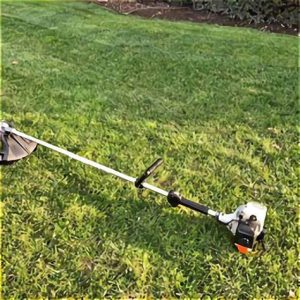6 Reasons Why Your STIHL Leaf Blower Requires the Choke to Be Engaged
You can keep your leaf blower going by adjusting the choke, but you should really look into what’s causing the issue. Not fixing it might have negative effects on performance and perhaps lead to further damage.
The choke must be engaged for the STIHL blower to operate when either the fuel or air supply is inadequate.
A STIHL blower will operate with the choke engaged if the fuel filter is clogged, the gas is old, the carburetor is dirty, the fuel line is punctured, the carburetor gasket is faulty, or the fuel vent is blocked.
Turn off the fan and let the motor cool down. To facilitate maintenance, the spark plug boot must be removed.
Table of Contents
Six Explanations for Why a STIHL Leaf Blower Requires the Choke to Be Engaged
The Use of Outdated Gas in a STIHL Leaf Blower
Often, stale gas is at blame when your leaf blower isn’t getting enough fuel. This is because natural gas deteriorates over time.
New fuel needs to be used up promptly. This is due to the rapid decomposition of gasoline, which can begin as soon as 30 days after purchase.
Implications of Ethanol UseNowadays, most gas has ethanol added to it, and this makes the fuel system more susceptible to condensation. As the ethanol and water evaporate from the gas, they leave behind varnish and sticky deposits that clog the fuel system.
Because of the corrosive nature of this mixture, it could potentially lead to the breakdown of fuel delivery system components.
Invest in a fuel stabilizer
Within 30 days, all gasoline must be used. Adding a fuel stabilizer will prevent the fuel from degrading as quickly if you are unable to utilize it immediately.
Some 2-cycle oils also feature a fuel additive, but you should check the shelf life to be sure it won’t expire before you need to replace your oil. Fuel stabilizers might have guarantees ranging from 30 days to 2 years from the time they’re purchased.
Leaf Blower Fuel and Oil Requirements for STIHL Models
Two-cycle and four-cycle leaf blowers from STIHL both call for a 50:1 gas-to-oil fuel mixture. Fill your tank with gas that has an octane value of 89 or higher and no more than 10% ethanol.
Don’t use fuels with a greater ethanol concentration than this in your STIHL.
Make sure you’re using a high-quality 2-cycle oil, such as STIHL High Performance or STIHL HP Ultra. Find out more about blower fuel types, maintenance, and selection at STIHL leaf blowers run on the gas and oil you see here.
DISSOLVE: Drain the gas from your STIHL blower. To stabilize the gas, clean the fuel system, and decrease moisture, you should add new gasoline with an additive like Sea Foam or STA-BIL.
STIHL Leaf Blower Fuel Line Clog or Puncture
The fuel system could be contaminated with air if the fuel line were to crack. It’s possible that a blockage in the line has reduced gasoline flow through the system.
If you discover a blockage or a puncture in the fuel line, you may need to use the choke to adjust the fuel-to-air ratio.
Verify that the gasoline lines are free of leaks and obstructions. If there are any broken lines, get them fixed immediately. The combination of carburetor cleaning, which can help loosen the clog, and compressed air, which can help dislodge it, can be used to attempt to clean a blockage.
A STIHL Leaf Blower With a Clogged Fuel Filter
To prevent debris from polluting the fuel supply, a fuel filter must be installed. When clogged with dirt and debris, it can reduce fuel flow if not replaced frequently. The best way to avoid this issue is to replace the filter once a year.
If your fuel is unclean, you will need to change it more frequently. It is strongly discouraged by me that you use filthy or dated fuel. While it’s understandable to want to avoid wasting money on expired gas, doing so could end up damaging your carburetor or engine and costing you more money in the long run.
The gasoline filter should be changed if it becomes clogged. The gasoline tank is where you’ll find the filter. To prevent dirt from entering the fuel tank, wipe the area surrounding the cap before removing it.
Mark the position of the gasoline filter so that the replacement can be installed in the exact same spot. It’s time to remove the tank’s filter. The fuel line can be hooked up to the filter using a clean, bent wire.
Take out the old filter, replace it with a new one, and then reinstall it in the fuel tank. The gas cap should be replaced.
An STIHL Leaf Blower with a Leaking Carburetor Gasket
Eventually, the gasket that protects the area behind the STIHL carburetor may wear out and become less effective. When this happens, the seal breaks and air gets in, making the engine perform poorly due to a lack of fuel.
To be “running lean” means that the ratio of air to fuel in the engine’s combustion chamber is higher than normal. If your carburetor gasket is leaking, you’ll need to run with the throttle on to make up for the excess air being sucked into the engine.
To fix this, you’ll need to dismantle the carburetor by removing the nuts and connections that hold it in place. Disconnect the gasket and carburetor.
After replacing the gasket, the carburetor, bolt, and links can be reattached. Now that you have the carburetor off of the leaf blower, you can examine it to see whether it needs to be cleaned.
A STIHL Leaf Blower With A Filthy Carburetor
Your STIHL leaf blower’s ability to start and stay running is dependent on the carburetor, which controls how much gasoline is supplied to the air intake.
An accumulation of varnish and deposits in your carburetor caused by using gas that has been sitting around for a while is bad for your blower.
In extreme cases, it can even obstruct the fuel jet entirely, preventing enough gas from reaching the cylinder to power the engine.
Remove deposits from old fuel by disassembling the carburetor and cleaning it using carburetor cleanser. After cleaning, if the carburetor still doesn’t work, you may need to have it rebuilt or get a new one.
If you’d rather not do it yourself, a small engine mechanic at your neighborhood STIHL dealer or a nearby small engine shop will be happy to help you out.
An Obstructed STIHL Leaf Blower Fuel Tank Vent
If the gasoline tank’s outlet is blocked, just a small amount of fuel will be able to escape. For the sake of maintaining a constant internal pressure, a gasoline tank requires a vent. When air is unable to escape, a vacuum is created.
If your leaf blower seems like it could shut off and you have to use the throttle to keep it running, it could be because of an issue with the fuel tank vent. The engine starts and runs smoothly without the choke when the fuel cap is slightly ajar to let air into the tank.
REMEDY: Install a new gasoline tank vent to allow fresh air to enter the tank.








